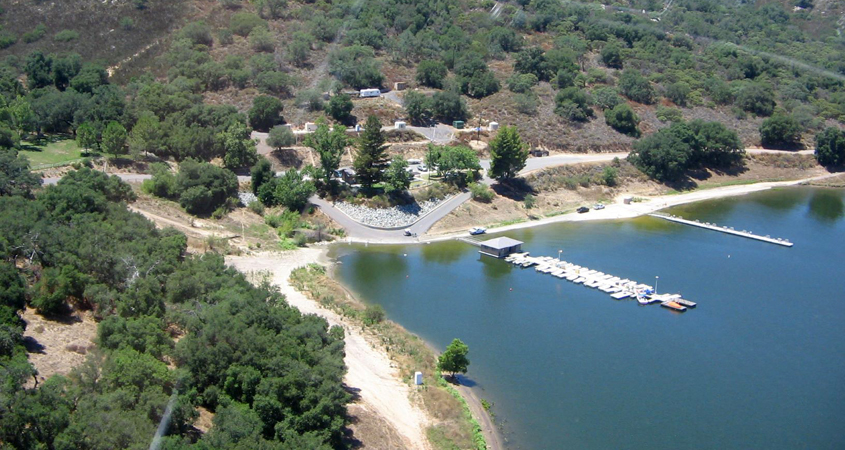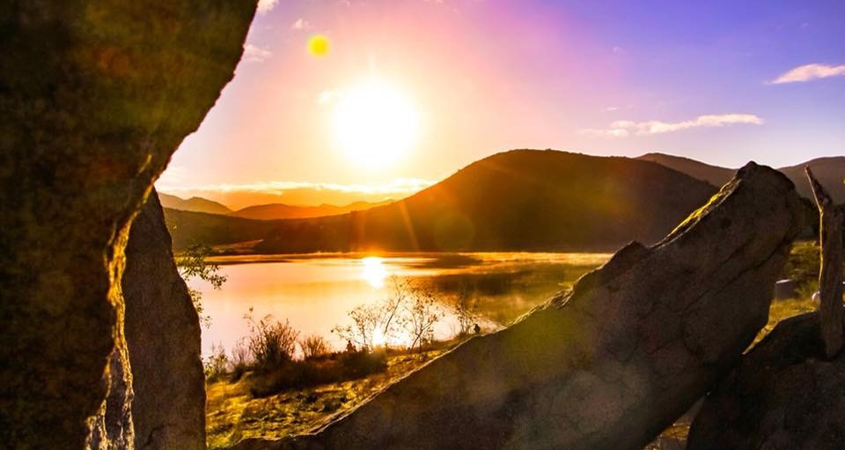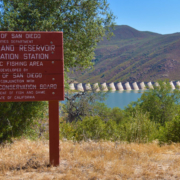The City of San Diego’s Sutherland Reservoir is now open to the public three days a week. The reservoir will be open Fridays, Saturdays, and Sundays from sunrise to sunset, allowing access for boating, fishing, hiking and picnicking.
It will also open on Memorial Day, Independence Day and Labor Day and is closed the third Friday of each month.
The reservoir is about 45 miles northeast of San Diego at 22018 Sutherland Dam Road in Ramona.
People can hear an updated recorded message detailing current activities, schedules, fishing and hunting results at Sutherland Reservoir and other City of San Diego lakes by calling 619-465-FISH (619-465-3474).
Family activities include picnicking, fishing, and boating

Recreational activities at Sutherland Reservoir including boating, fishing, and picnicking. Photo: City of San Diego
Viviana Castellon, the City of San Diego’s reservoir maintenance supervisor, said her team opened a little early this morning.
“The environment is beautiful, flora and fauna are raging,” said Castellon. “It’s a healthy environment biologically. It’s a backcountry reservoir, very inviting and relaxing. Depending on what you want to do, we have ADA accessibility. We expect people to have a great time at Sutherland,” said Castellon.
A bonus for spring visitors, Sutherland Reservoir is the midst of raptor mating season.
“Eagles are soaring, and we have peregrine falcons,” she said. “If people bring their binoculars, they’ll hear and see quite a bit.”
The recreation area features barbecues, picnic tables, and restrooms. Self-contained gas barbecues are allowed in the picnic area.
Water activities at Sutherland Reservoir include boating, canoeing, kayaking, sailboarding, and float tubing. Those activities are only allowed on Saturdays and Sundays. Leashed dogs are allowed. Turkey hunting at the reservoir is by reservation only, starting this year on March 30.
One of the most popular activities at Lake Sutherland is fishing. The lake contains largemouth bass, catfish, crappie, sunfish, and carp. Bowfishing is permitted for carp only, in compliance with California Department of Fish and Wildfire regulations. Special conditions apply and are listed on the City of San Diego’s website.
Swimming, ground fires, glass containers, and camping are not permitted. Take precautions to avoid rattlesnakes and poison oak, both of which are present at Sutherland Reservoir.

Maile Guerrero of La Mesa was honored for her photo of Sutherland Reservoir in the San Diego County Water Authority’s 2018 “Brought to You By Water” photo contest.
Construction on Sutherland Dam began in 1927, but it was not completed until 1954. The reservoir is operated and maintained by the City of San Diego’s Public Utilities Department and is part of the city’s drinking water system.
For additional information about Sutherland Reservoir, including boating, fishing, and hunting rules, required permits, as well as details about the City’s other reservoirs, go to sandiego.gov/reservoirs-lakes.




 Sweetwater Authority Logo 2019
Sweetwater Authority Logo 2019
